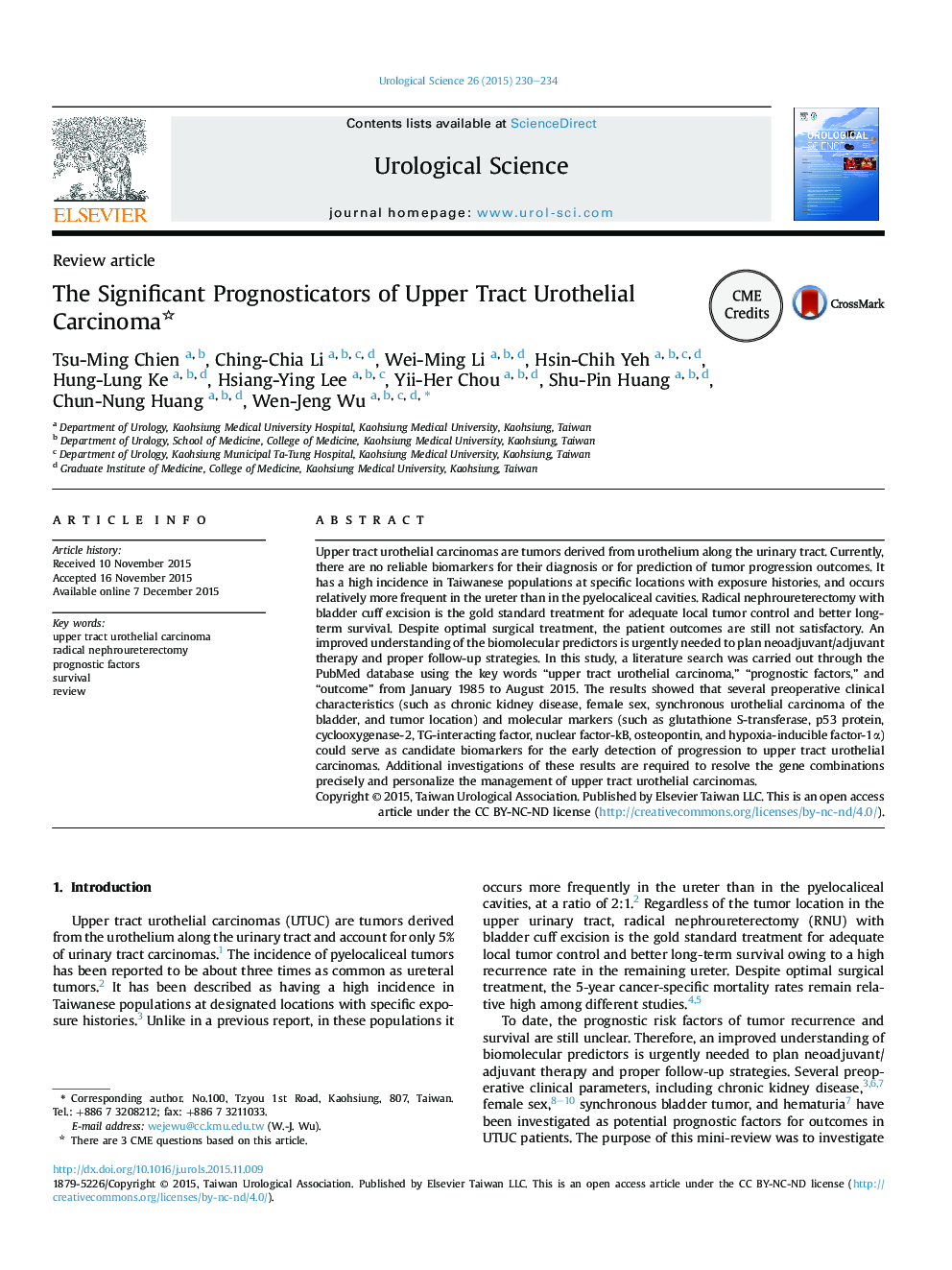| Article ID | Journal | Published Year | Pages | File Type |
|---|---|---|---|---|
| 4276015 | Urological Science | 2015 | 5 Pages |
Upper tract urothelial carcinomas are tumors derived from urothelium along the urinary tract. Currently, there are no reliable biomarkers for their diagnosis or for prediction of tumor progression outcomes. It has a high incidence in Taiwanese populations at specific locations with exposure histories, and occurs relatively more frequent in the ureter than in the pyelocaliceal cavities. Radical nephroureterectomy with bladder cuff excision is the gold standard treatment for adequate local tumor control and better long-term survival. Despite optimal surgical treatment, the patient outcomes are still not satisfactory. An improved understanding of the biomolecular predictors is urgently needed to plan neoadjuvant/adjuvant therapy and proper follow-up strategies. In this study, a literature search was carried out through the PubMed database using the key words “upper tract urothelial carcinoma,” “prognostic factors,” and “outcome” from January 1985 to August 2015. The results showed that several preoperative clinical characteristics (such as chronic kidney disease, female sex, synchronous urothelial carcinoma of the bladder, and tumor location) and molecular markers (such as glutathione S-transferase, p53 protein, cyclooxygenase-2, TG-interacting factor, nuclear factor-kB, osteopontin, and hypoxia-inducible factor-1α) could serve as candidate biomarkers for the early detection of progression to upper tract urothelial carcinomas. Additional investigations of these results are required to resolve the gene combinations precisely and personalize the management of upper tract urothelial carcinomas.
